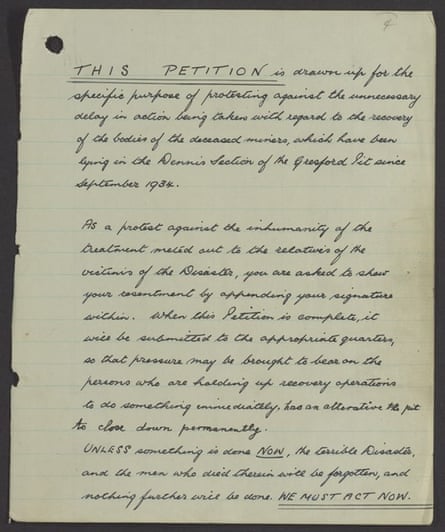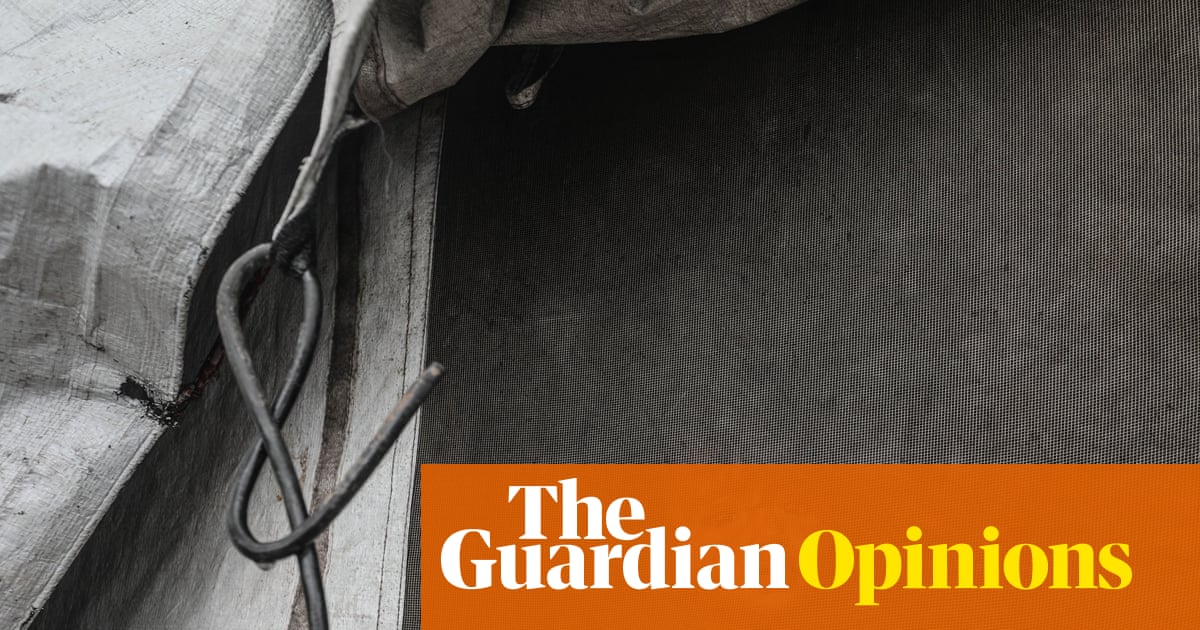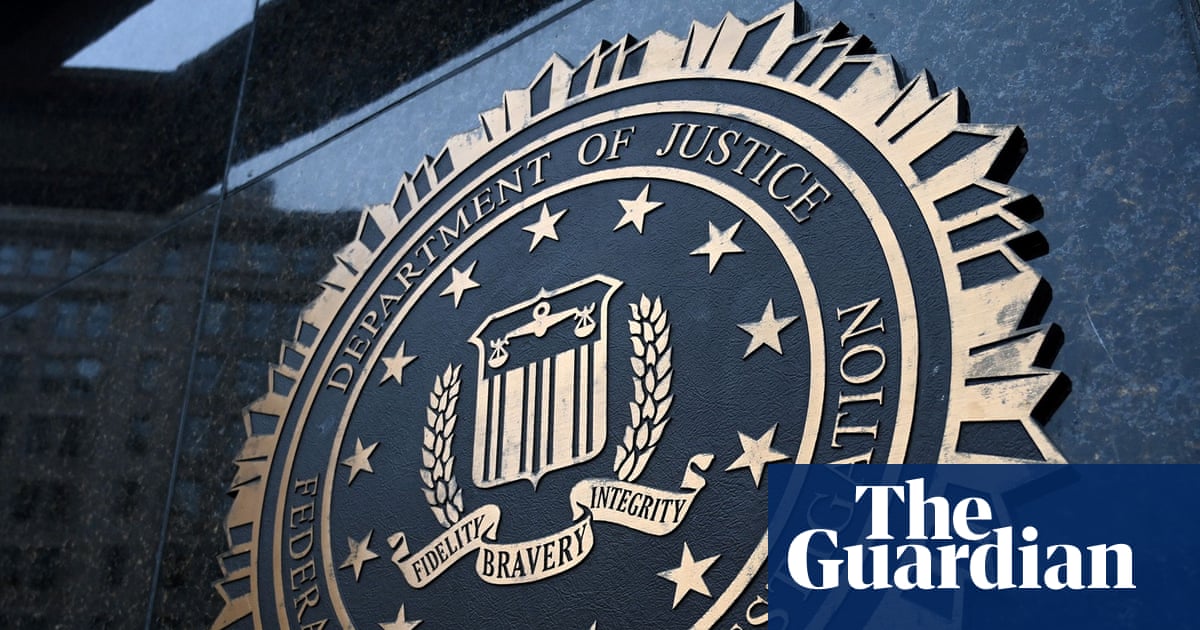Poignant records relating to a colliery disaster in the 1930s that lay unseen for decades at the National Archives are being put on display close to the site of the mine in north Wales.
Among the documents at the west London archive are petitions and emotional letters calling for the bodies trapped in the underground explosion at the pit in Gresford to be recovered. Despite the heartfelt entreaties, the vast majority remain there.

Another document that may trigger anger rather than sorrow is a falsified safety logbook that highlights an attempt to cover up failings in the weeks before the 1934 disaster, in which more than 260 people died.
It is the first time that the National Archives in Kew has offered a display of original documents to a community in this way. The Archives thought it was vital that the voices of the people who lost so much in the catastrophe were heard again in the area where the disaster happened.
Alan Jones, 79, who worked down the mine in the 1960s, said the temporary return of the documents to Wrexham was welcome. “What happened goes deep with everybody in Wrexham,” he said. “We’ve all got a connection.”
Jones’s tai (his grandfather), Josiah, should have been down the mine when disaster struck but he swapped shifts with his cousin, Jabez. Jones said: “Jabez’s body is still entombed there. My grandfather never went back to work – we believe he had survivor’s guilt.”
Another artefact is a notebook with mine air measurements that William Cuffin, assistant surveyor, was told to make up in the aftermath of the explosion to give the impression that crucial safety checks had been done.
In his evidence to police, which was also found in the archive, Cuffin said: “I recorded a number of air measurements. The measurements recorded … were not taken in the pit and are false.”

Jones, who went to view the documents at the National Archive before their transfer to Wrexham, said: “I could see the falsifications straight away. I didn’t know that book existed until now.”
The documents are to be displayed at Wrexham library on Monday and Tuesday. They will then be taken back to Kew, where the public can come into the reading rooms and order them for research.
Also on display are urgent telephone messages to the Mines Inspectorate as the catastrophe unfolded, and records from the inquiry into what happened.
after newsletter promotion
Sarah Castagnetti, visual collections team manager at the National Archives, was prompted to look for records relating to the disaster when she saw it featured in the Welcome to Wrexham documentary series, which told how the city’s football team was taken over by the Hollywood stars Rob McElhenney and Ryan Reynolds.
She said she was “stopped in her tracks” when she found exercise books full of the names of people calling for the bodies of loved ones to be recovered. “There were names after names after names,” she said.
Castagnetti highlighted one letter from Margaret Capper, which urged the authorities to recover the body of her brother, John. Capper wrote: “It grieves me terrible to see my mother and father suffering terrible under this heavy burden they have to bear, and the thought of where their loved one is lying is unbearable.”
Castagnetti said: “The voices of the people jumped out and were very moving. I really wanted to try to allow the people of Wrexham to have a closer involvement with the story.”
-
Gresford: Voices from the Archives will run at Wrexham library on Monday 22 September and the morning of Tuesday 23 September.

 3 months ago
66
3 months ago
66

















































